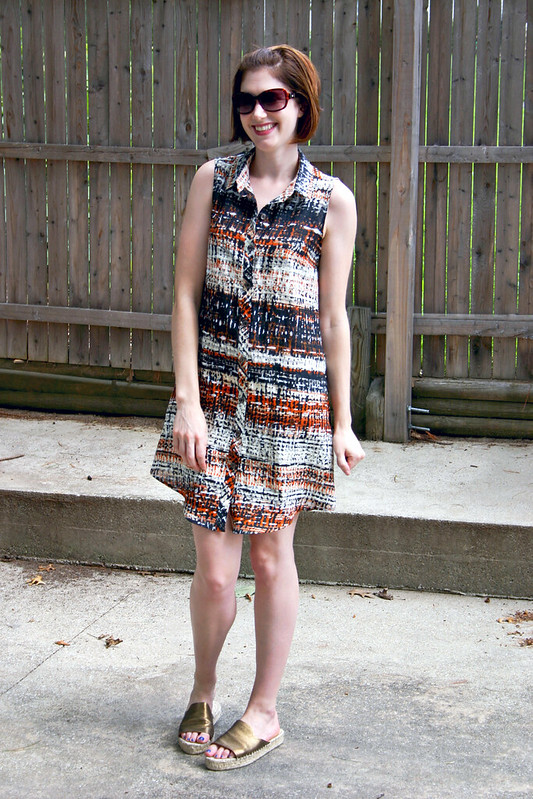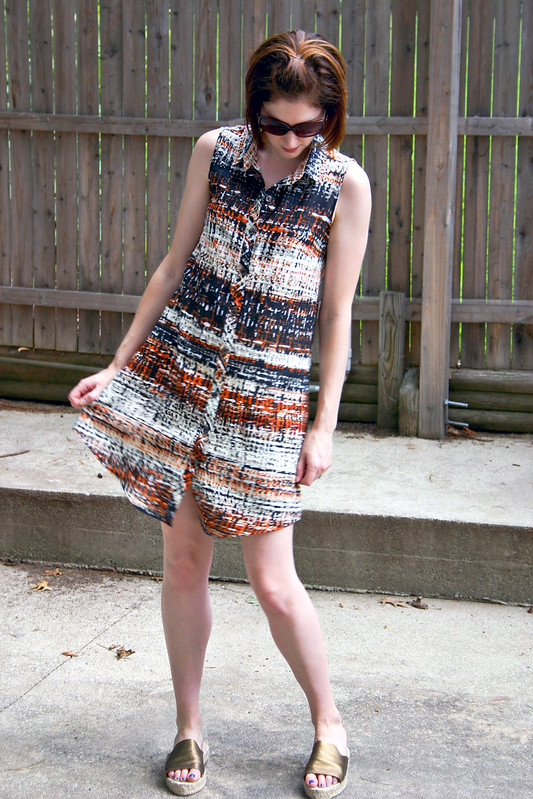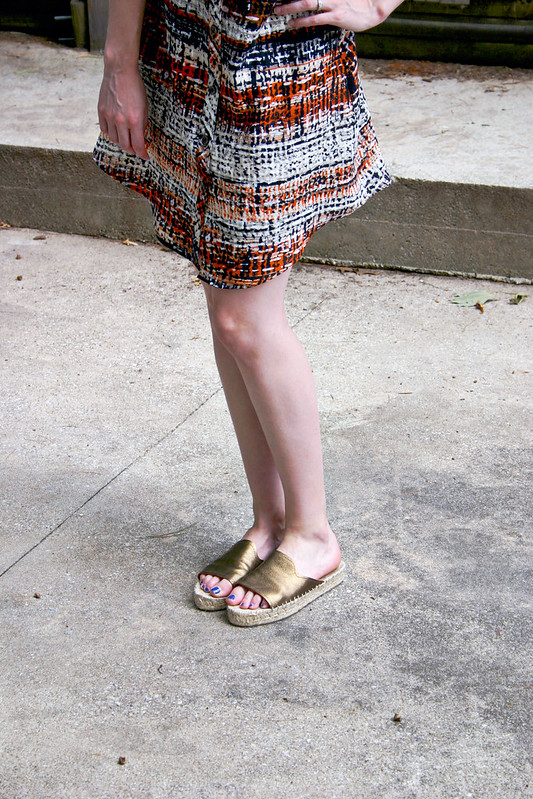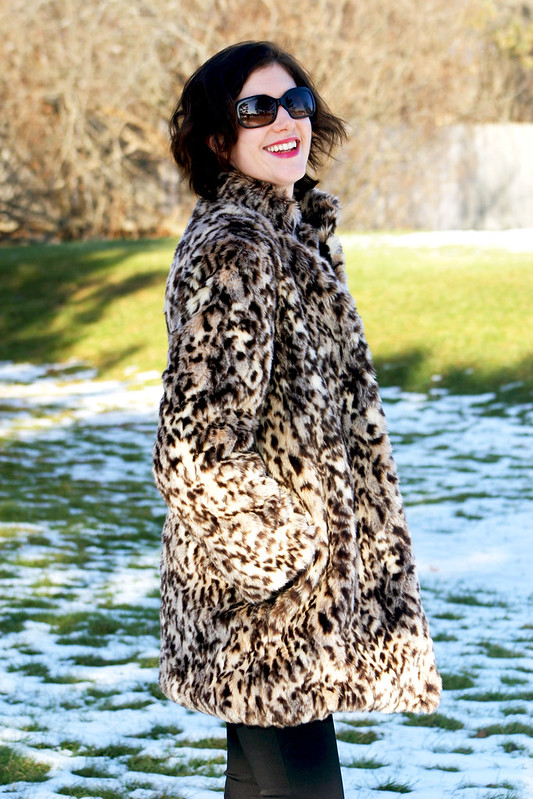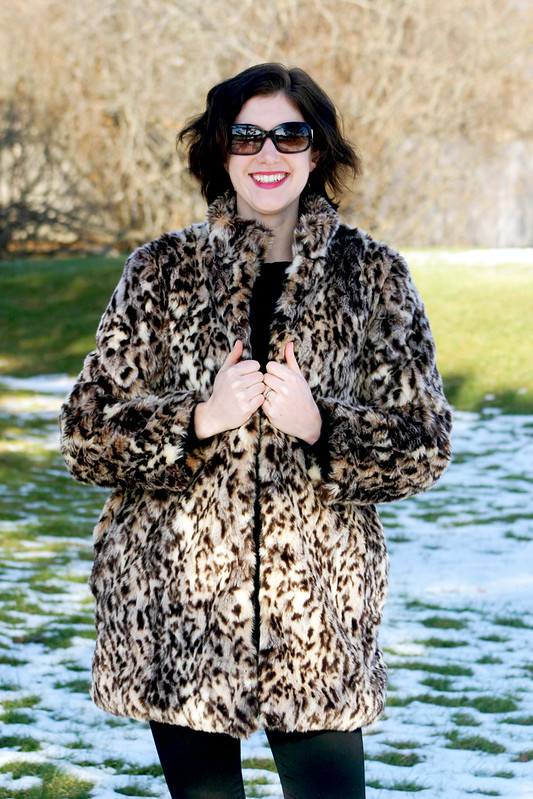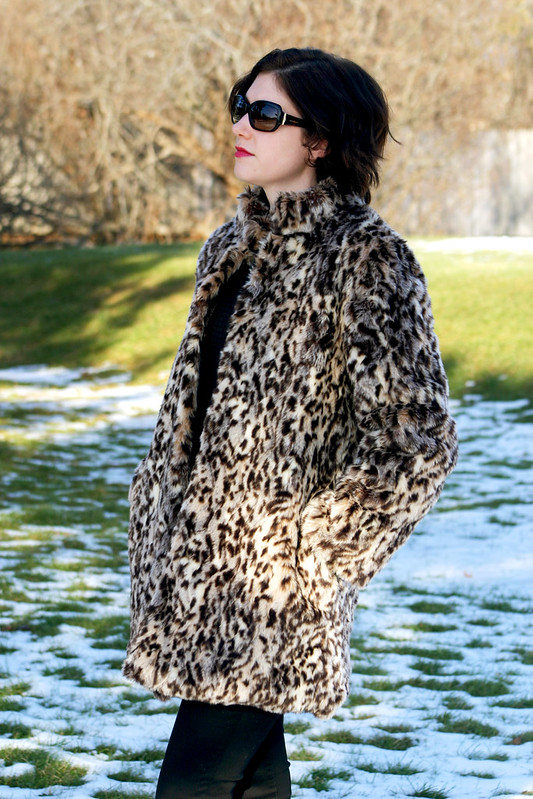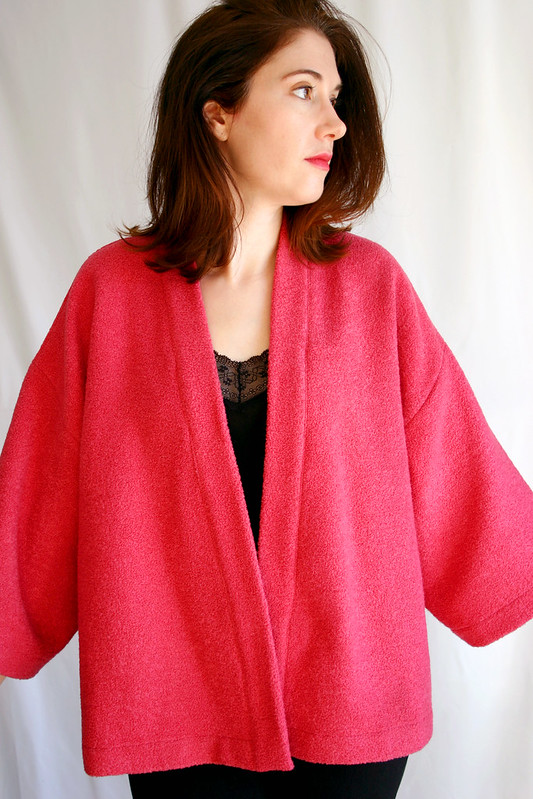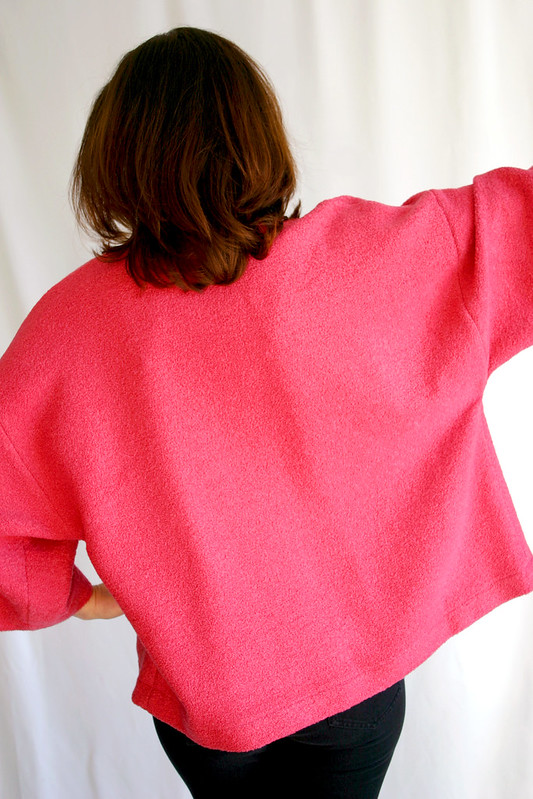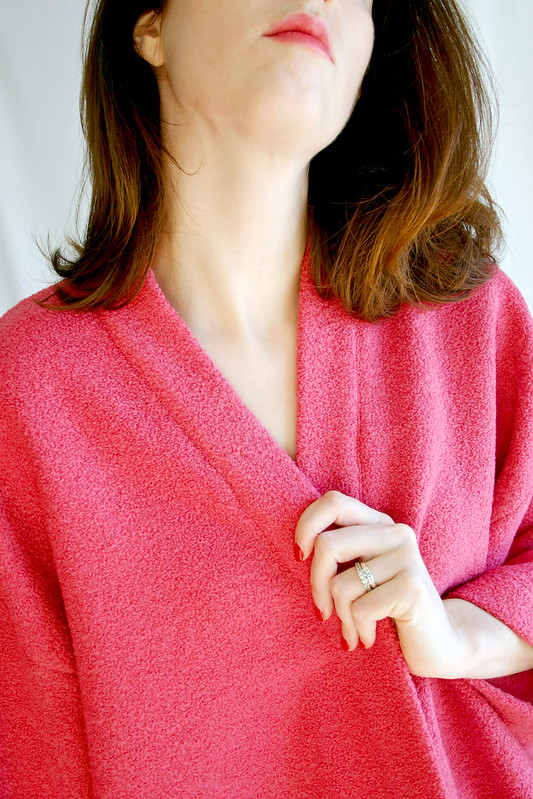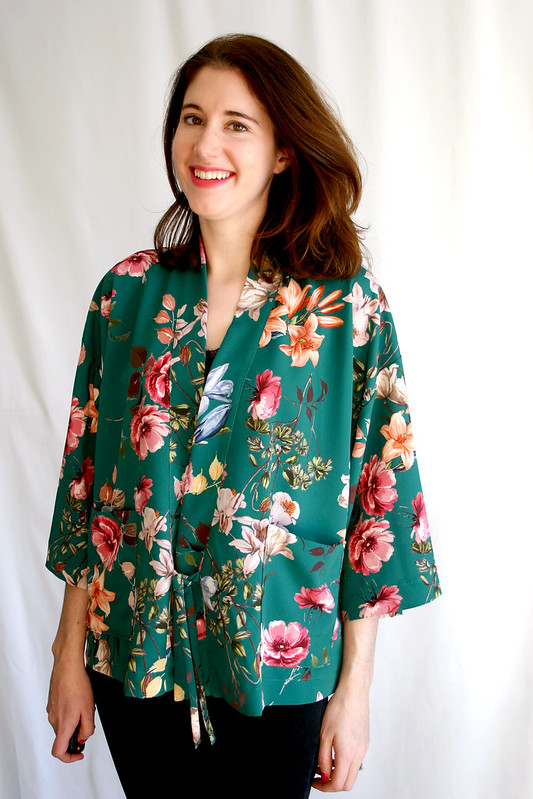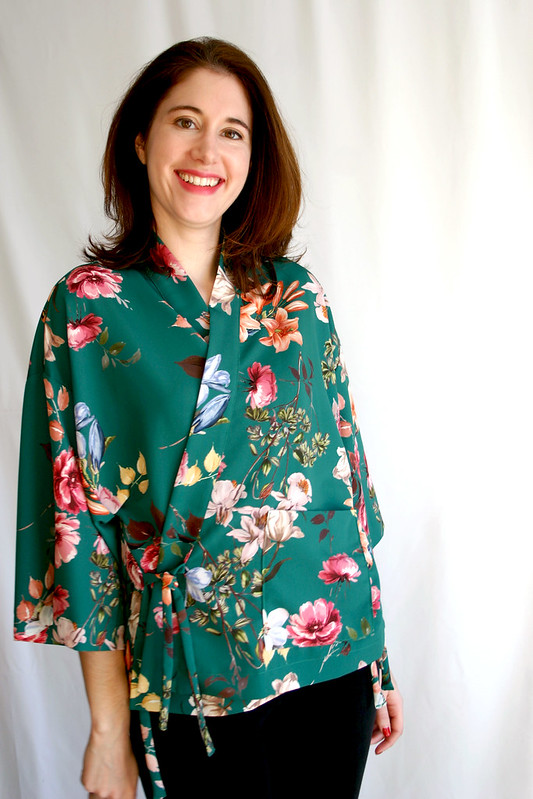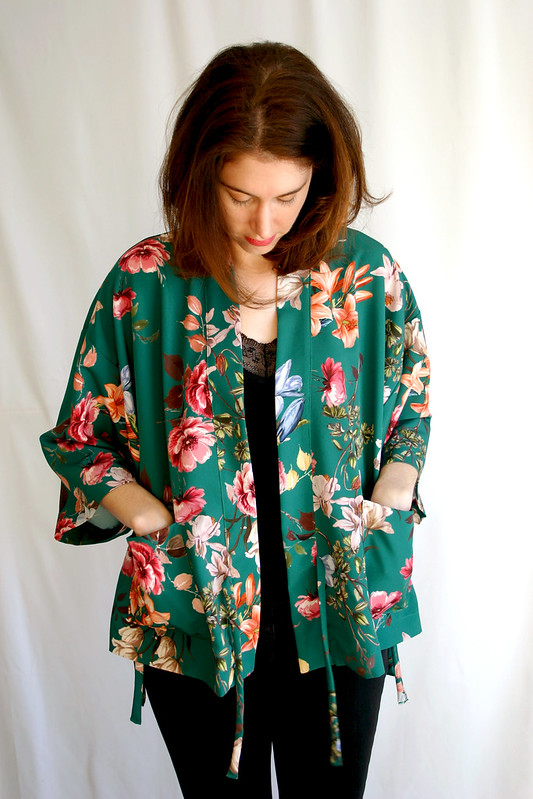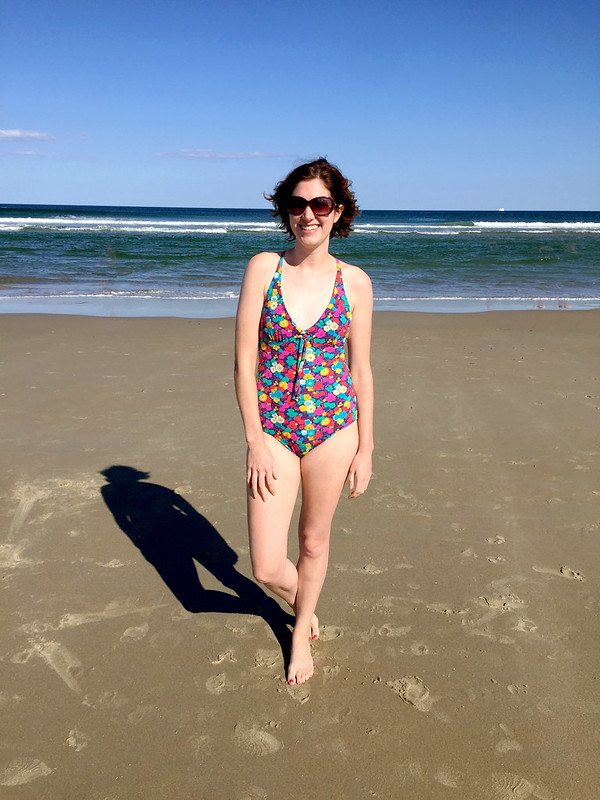
I really didn’t think I was going to make a swimsuit this year. Don’t get me wrong, I love sewing swimwear, but there doesn’t seem to be a whole lot of cute one-piece swimsuit patterns out there – I’m no longer a bikini/two-piece kinda gal these days. But when Swim Style Patterns released their Avoca swimsuit pattern, I instantly fell in with the lace-up detail of the scoop back and the cute lace-up front, and it jumped to the top of my sewing queue for the summer.
Before I jump into sewing this swimsuit – omg, isn’t this spandex so freaking pretty?? This is a much sought-after Liberty London spandex that I found online from The Fabric Store in New Zealand. I honestly couldn’t find their spandex anywhere else, even when I went to the Liberty department store in London earlier this year! It was really hard to choose a print to use, but I love the vibrancy and colors of this floral print and thought it would pair nicely with this pattern.
I’ve never sewn with Swim Style Patterns, and to be honest, if you’re just starting out with sewing swimsuits, I’d recommend starting with a Big 4 pattern to learn swimwear construction techniques and then move to Swim Style. I think in the sewing community we have a tendency to be “nice” in our reviews of indie pattern companies and to not hold back when reviewing the Big 4 (or, at least, this is what I’ve seen), but my goal is to be as transparent as possible and provide guidance/help/advice for anyone thinking about trying out any particular sewing pattern – and I think this is why a lot of us got into blogging. With that being said, I overall was perplexed as to the “why” for constructing the suit in the manner that it was, and there’s quite a bit that I would change in my next version of this pattern. I also found the written instructions to be a little funky and relied a lot on my prior swimsuit sewing knowledge to make this suit, but referred to the instructions for the placement of straps and other details like that.
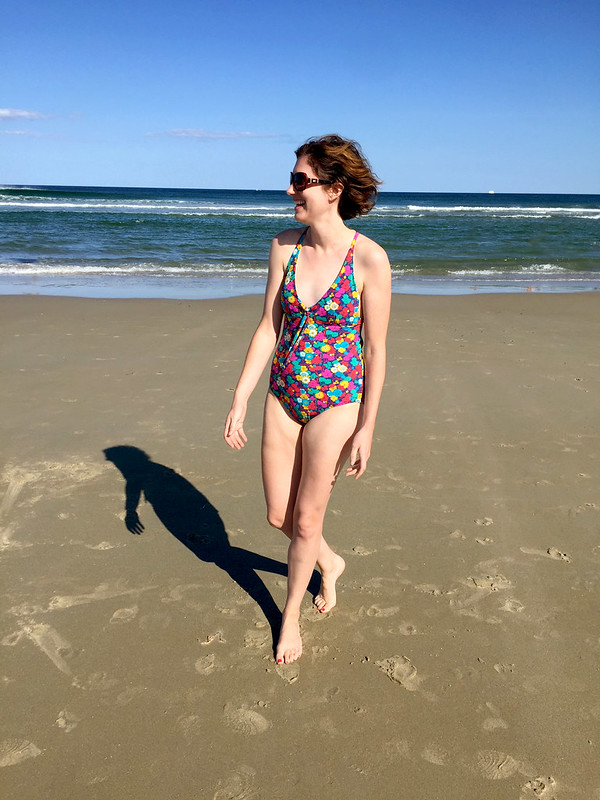
.
First things first: I’m not certain of how supportive this suit would be for larger-busted gals. I don’t have a lot going on up top (ahem), and there are some suggestions in the instructions on ways to add more support that I opted not to do (like adding piece of elastic around the underbust and along the sides of the cups), but I found myself regularly adjusting the straps to make sure I felt secure when jumping around in the waves and such. Maybe if I added the elastic underneath the bust it would be different? Not sure, I might give it a go the next time.
One thing that I wish I did when sewing the bust cups: construct them the normal way by stitching elastic along the edges of the cups, and then turning the seam allowance to the wrong side and stitching in place. Every RTW suit I ever owned is made this way, and every suit I made thus far is made that way. So, why not this one? What I found super annoying is that even though I under-stitched the lining per a reviewer’s suggestion on Pattern Review, it still managed to peek over the edge of the cups a bit and was visible when wearing the suit. If the bust cups were sewn the normal way with elastic and raw edges turned, this would not have happened! I think part of the reason why this instructions weren’t this way may have had to do with trying to create less bulk at the center front where the loops are added for the front lacing, but I would have been ok with a little bit more finagling with that part of the swimsuit vs having the lining showing. The instructions also call for top stitching of the cups, and maybe that would have helped to control the lining from coming out, but I couldn’t get the top stitching to look nice on the bias edge of the spandex cup, so I gave up.
The pattern includes a separate piece for a swim cup pocket – it’s a nice addition if you’re not a fan of using swim cups in swimwear and want the cups to be removable, but I would personally eliminate it and just insert the cup between the main fabric and the lining for simplicity.
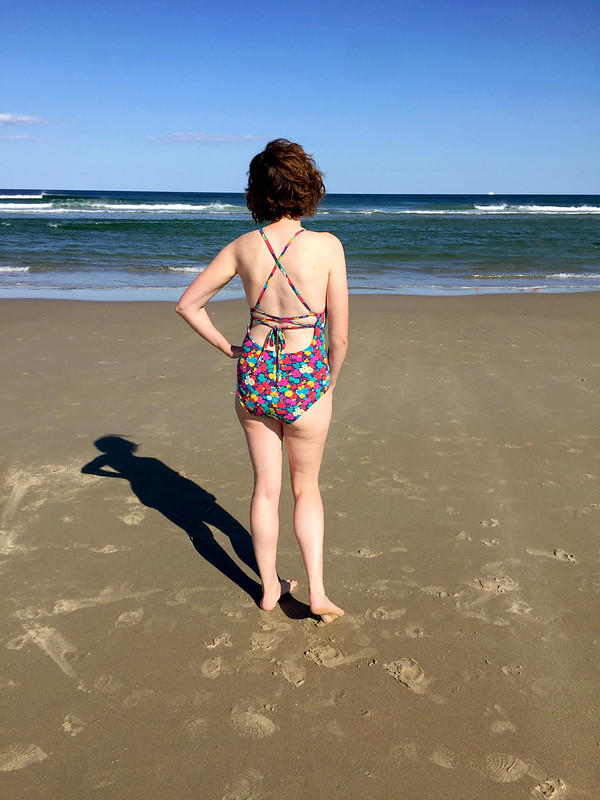
I’m really glad I made a mock-up of this pattern out of some spandex scraps in my stash before cutting into my Liberty spandex, because the rear coverage felt pretty skimpy to me. I ended up merging the bottom pattern from the Vogue 9192 suit I made with the torso of this swimsuit pattern, and got the fit and coverage I like and feel comfortable with. So, beware if you make this suit and you like a more modest fit!
I also ignored the instructions on how to apply the elastic to the back and legs and did it my normal way: attach it to both layers of the suit (lining and main fabric) on the inside of the suit with my serger, turn the raw edges to the wrong side, and top stitch with a zig-zag stitch.

Like I mentioned earlier, the back is what sold me on this pattern – isn’t that lacing detail a great design element?? Something I would change next time that may give the straps a more supportive role in the fit of the suit is to use elastic inside of the tube straps. I did this when I made a Maison Fleur bikini top, and when I wore the suit, the fit felt very secure and the elastic gave the straps more recovery. When wearing my Avoca suit on vacation, I had to really really pull and adjust the strap lacing and tie it super tight, otherwise there was too much slack in the simple spandex tubes. With this being such a key part of getting the fit right and keeping the suit in place, it’s worth a try to see if it improves the overall functionality.
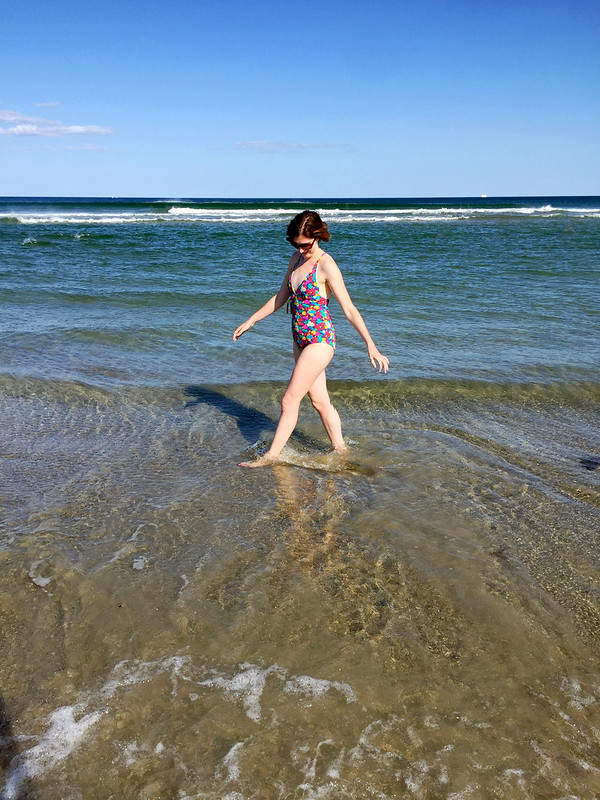
Overall, I really enjoyed wearing this suit on vacation last week to Ogunquit, ME and it checked off all of the boxes when I look for a one-piece suit: cute and stylish, on the somewhat modest side, but not too mumsy/mature looking. Despite my challenges with the pattern and things I wish I had done differently, I would make this again (or any patterns by Swim Style) but make sure to use the construction methods I know that work instead.
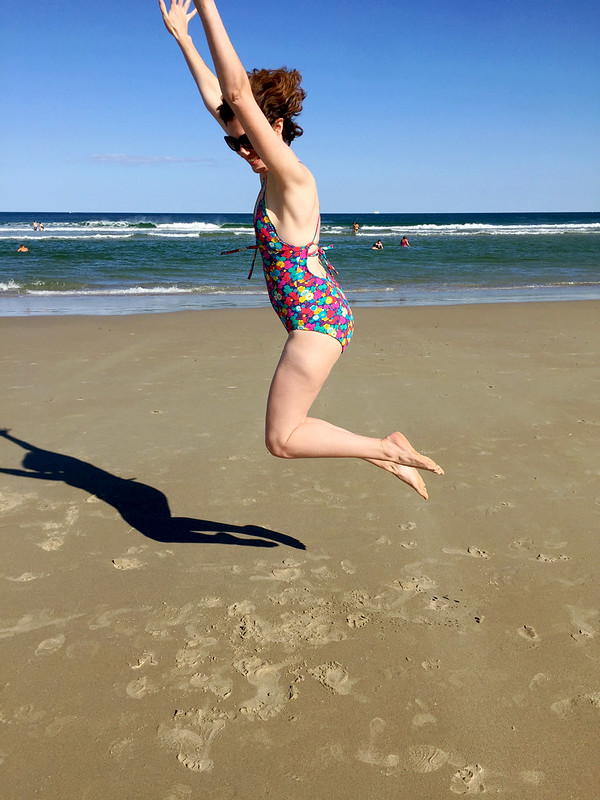
Pattern: Avoca One-Piece by Swim Style Patterns
Fabric: Liberty spandex from The Fabric Store
